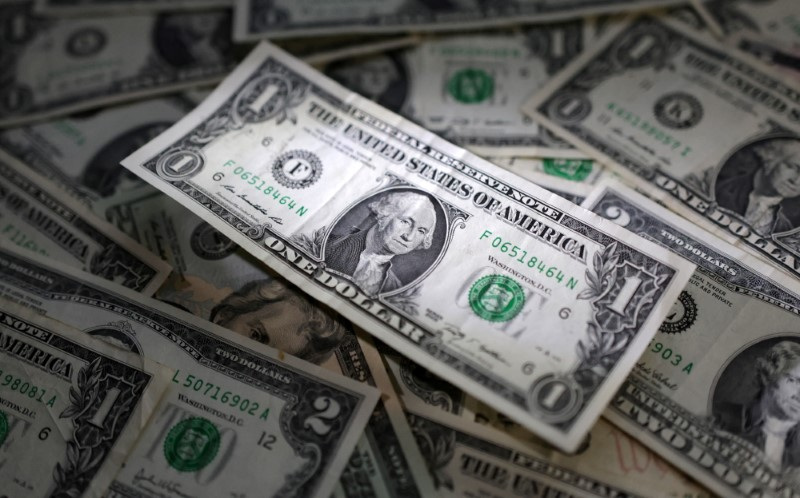Dollar drifts as ebbing US inflation sets the stage for rate cuts
By Ankur Banerjee
SINGAPORE (Reuters) -The dollar was soft on Thursday, with the euro perched near an eight-month high after data showed U.S. inflation was slowing, underpinning wagers that the Federal Reserve could lower borrowing costs next month.
The yen was steady at 147.315 per dollar after data showed Japan's economy expanded by a faster-than-expected annualised 3.1% in the second quarter due to a solid pickup in consumption, keeping another near-term rate hike on the table.
While the yen has inched away from the seven-month high of 141.675 per dollar touched during last week's market mayhem, it remains well beyond the 38-year lows of 161.96 it was rooted to at the start of July.
Bouts of intervention from Tokyo early last month and then a surprise rate hike from the Bank of Japan at the end of July wrong-footed investors who bailed out of popular carry trade, lifting the yen.
In the U.S., data on Wednesday showed the consumer price index rose moderately, in line with expectations, and the annual increase in inflation slowed to below 3% for the first time since early 2021.
The figures add to the mild increase in producer prices in July in suggesting that inflation is on a downward trend, although traders are now anticipating the Fed to be not as aggressive on rate cuts as they had hoped.
Josh Chastant, portfolio manager for public markets at GuideStone Funds, said both the U.S. CPI and PPI data pointed to a 25 basis point (bps) cut by the Fed in September.
"A lot will depend on the tone of the minutes and post-meeting press conference, but markets could be mildly disappointed if we only get a 25 bps reduction," he said.
Markets are now pricing in 64% chance of a 25 bps cut next month and a 36% chance of a 50 bps reduction, the CME FedWatch tool showed. Traders were evenly split at the start of the week between the two cut options following last week's sell-off.
Markets anticipate 100 bps of cuts this year from the Fed.
Mansoor Mohi-Uddin, chief economist at Bank Of Singapore, expects Fed to start reducing rates in "measured 25 bps moves to the benefit of risk assets."
"We expect cuts in September and December with a possible cut too in November if the US labour market weakens further this year."
The focus will now switch to the U.S. retail sales data due later on Thursday.
The euro was steady at $1.1011 in early trading, hovering close to $1.10475, the highest since early January it touched on Wednesday. The single currency is up 0.86% for the week, set for its strongest weekly performance in over a month.
Sterling was a tad stronger at $1.28375 after dipping on Wednesday as a softer-than-expected reading on British consumer price inflation supported expectations of further rate cuts from the Bank of England this year.
The dollar index , which measures the U.S. unit versus six rivals, was last at 102.59, not far from the eight-month low of 102.15 it touched last week. The index is on course for its fourth straight week in the red, a run it last had in March-April 2023.
The New Zealand dollar was 0.13% higher at $0.60035 having dropped more than 1% in the previous session after the Reserve Bank of New Zealand reduced the cash rate by a quarter point, its first easing since early 2020.
The Australian dollar was up 0.42% at $0.6624 after data showed Australian employment sped past forecasts in July, even as the jobless rate ticked higher to a 2-1/2 year high. [AUD/]
The strength of labour demand could reinforce the Reserve Bank of Australia's (RBA) argument that a rate cut is unlikely this year given how sticky inflation is proving.
Elsewhere, China's yuan weakened against the dollar weighed by disappointing data that showed China's factory output growth slowed and missed expectations in July. [CNY/]
Source: Investing.com
